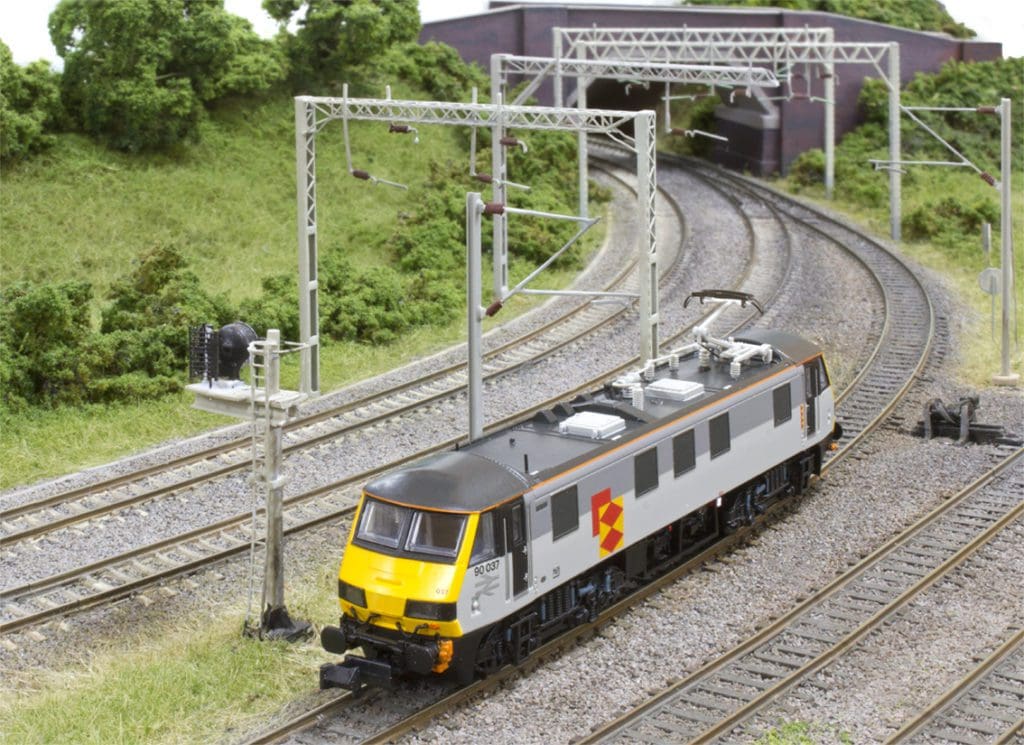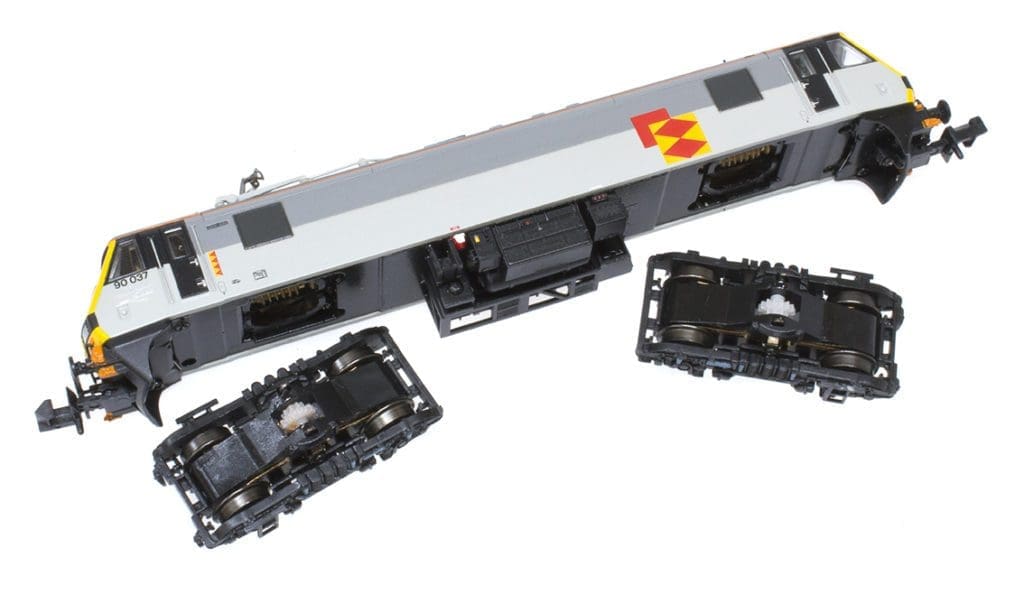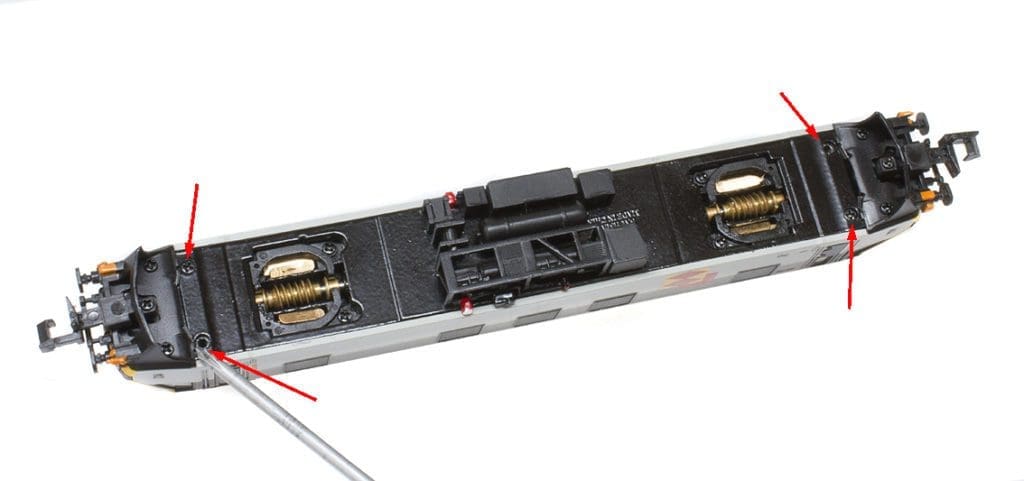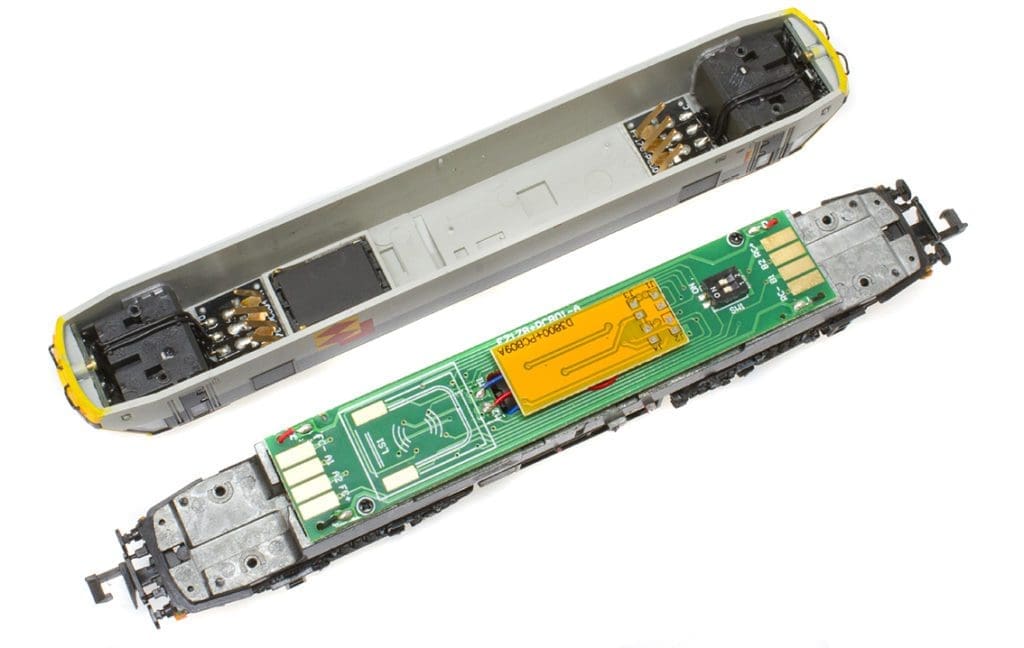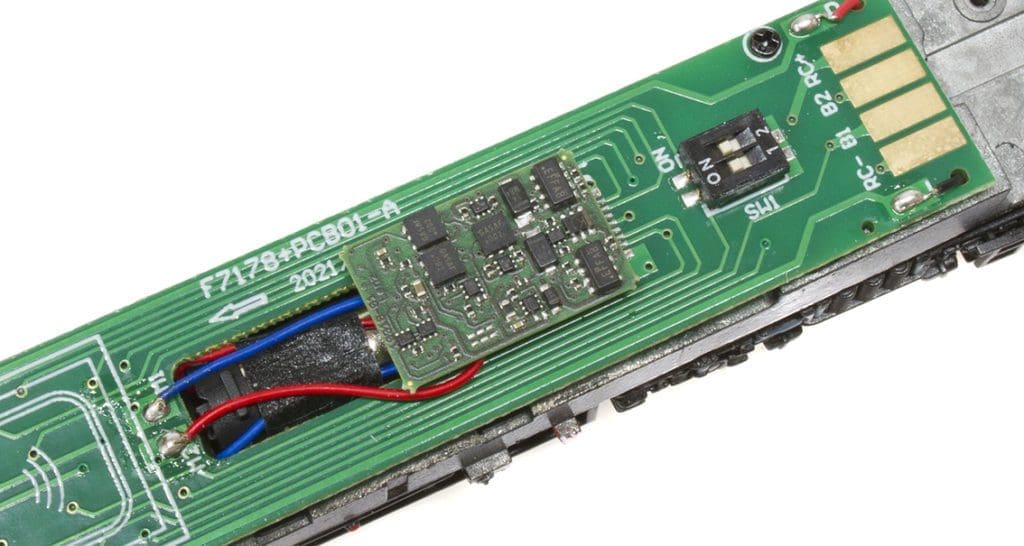Released in late 2022, the all-new Graham Farish Class 90 ac electric locomotive model is a major development for ‘N’ gauge modelling. It fills an important gap in the rosters of West Coast, East Coast and Anglia mainline modellers from 1987 to present day, both freight and passenger operations.
New model impressions
Bachmann (Kader Industries) gained an ‘N’ gauge Class 90 model when it acquired the Graham Farish business in 2001. The model received a degree of upgrading, continuing to be released for a few years. It slowly fell behind newer model development because of its basic body shell fitted with a one-size-fits-all pantograph and front fairings attached to the bogies. There was no DCC interface or running lights of any kind fitted to the model.
The new Class 90, whilst a long time in the works, is a dramatic improvement over the old model in terms of electronics and the drive alone. It captures the shape and personality of the Class 90 well, with excellent detail definition. Livery application, on first inspection, is sharp and well applied, although the first sessions in the studio has revealed a couple of ragged paint edges and some unevenness of number application, not immediately visible at normal layout viewing distances.
Enjoy more Rail Express Magazine reading every month.
Click here to subscribe & save.
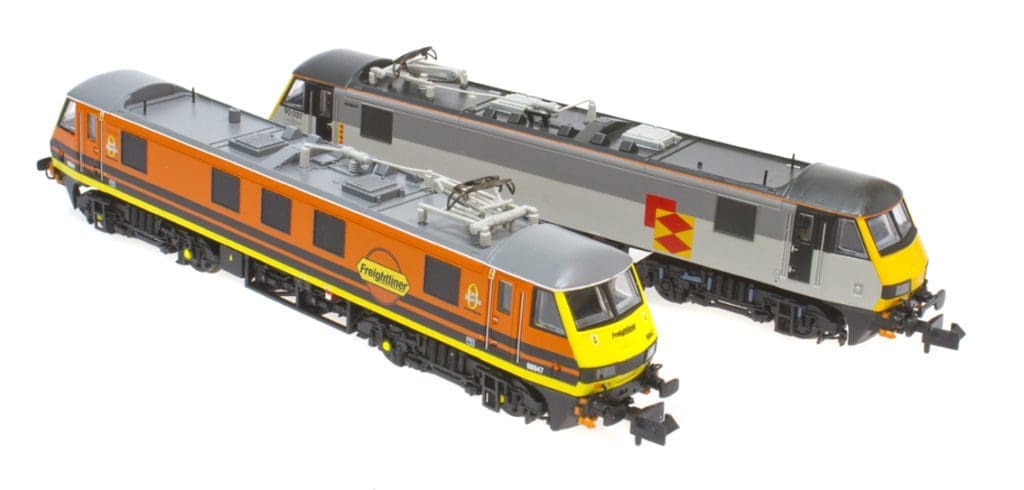
The new Class 90 is lined up for a comprehensive review in the April issue of Rail Express Magazine (REM228) which gives time to test the models and examine them the usual Rail Express Modeller way.
Both of the tested models represent opposite ends of the locomotive’s history with No. 90037 (371-781) in Railfreight Distribution livery and Freightliner G&W No. 90047 (371-785). They are priced at £194.95 each. Bachman also released the model in InterCity, Virgin Trains and Rail Express Systems liveries at the same time. www.bachmann.co.uk.
Decoder fitting
To test the models as part of the review process, a NEXT18 decoder was fitted: a Lenz Silver NEXT18 decoder being chosen, although Bachmann offers a suitable decoder too. To complete the project, tweezers and a small cross-head screwdriver are required. The model should be placed on a soft foam mat to protect the livery and small fittings. Note the four screws that should be released to remove the body. They are inboard of the four similar screws that hold the front fairings and close coupling cams in place.
